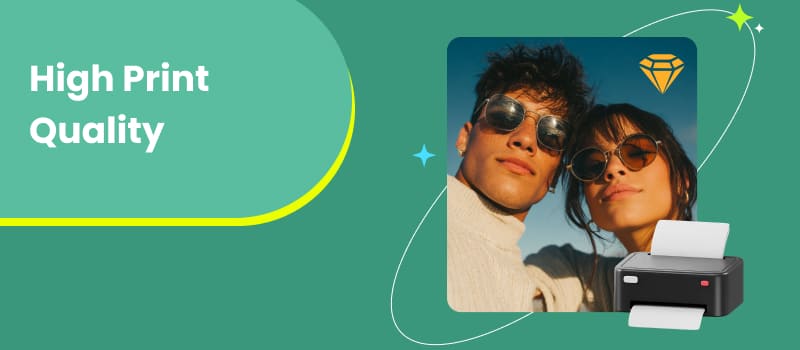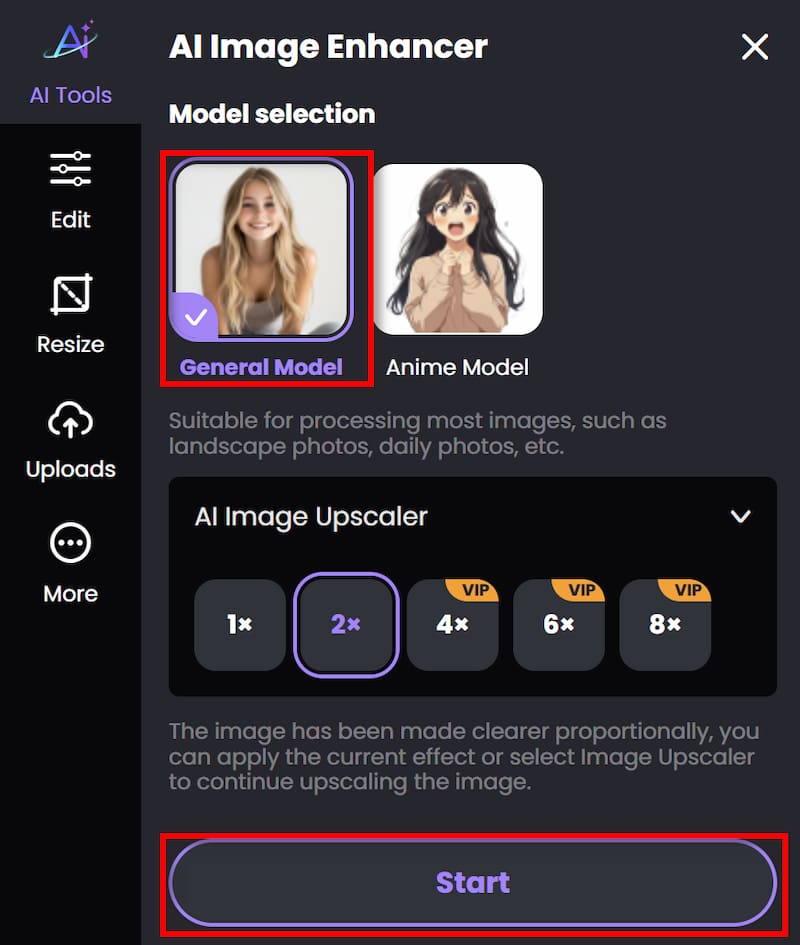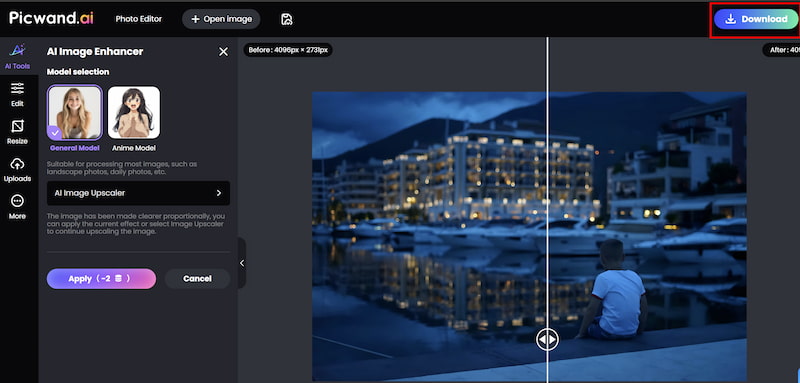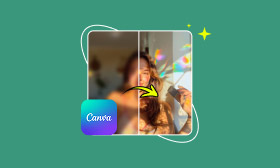How to Print High Quality Photos: Step-by-Step Guide
Sometimes you print a photo you love, only to find it looks grainy, dull, or pixelated. What happened? The chasm between a stunning digital image and a high-quality physical print vast. This guide will walk you through essential preparation tips, demystify resolution, and show you how modern AI tools are making high print quality more accessible. In the following part, let’s transform your pixels into priceless prints.

Contents:
Part 1. Tips for Printing Quality Photos
Your image must be in optimal condition prior to printing. These following useful pointers can help you consistently produce prints that are clear and appear professional, answering the question about where to get quality photos printed.
1. Choose the appropriate file format first.
We advise you to utilize lossless file formats, such as PNG or TIFF. Though they compress picture data and sometimes result in apparent imperfections, particularly in big prints, JPEGs are acceptable for casual printing.
2. Use proper lighting when editing
People frequently make the error of altering images on overly bright displays. Your printed version may seem darker than you had anticipated as a result. Always evaluate colors in neutral lighting and set your monitor's brightness to between 50 and 60 percent, or use tools to remove noise in lightroom.
3. Adjust the monitor's calibration
Your printer may not see what you see on your screen. Accuracy is ensured via monitor calibration, which maintains high print quality and color consistency between digital and print.
4. Keep your printer clean and in good condition.
Even the crispest images can be ruined by smudged ink or blocked nozzles. Consistent color and clarity may be maintained with routine maintenance, which includes test prints and print head cleaning.
5. Choose high-quality paper
Paper type matters more than most realize. Glossy paper gives vibrant, deep colors, while matte paper offers a more artistic, subdued finish. So always match your paper type with the right printer settings.
Part 2. How to Improve Photo Resolution for Printing
Even with the best camera, some photos may still lack sharpness or detail when printed. This is where image enhancement becomes essential. If you want to achieve professional-grade print quality, a highly recommend tool is Picwand AI Photo Enhancer, which can enhance photos for printing and handle most technical work without much manually retouching, you can:
• Enhance resolution in one click.
• Fix underexposed or faded photos automatically.
• Restore details lost in compression or time.
• Get consistent print results across different projects.
Features
• Powered by AI enhancement algorithms
• Support JPG, JPEG, PNG and other common formats
• Increase the resolution to 4K without losing quality
• Make the image cleaner and sharper
Step 1: Click Add your photo(s) to upload the old image in Picwand AI Photo Enhancer.

Step 2: Beside Photo enhancement, if you want to improve the resolution, you can also achieve image upscaler by adjusting the parameter. Then click on Start to begin processing.

Step 3: Wait for seconds. And then you can click Download to save the finished work.

Picwand AI Photo Enhancer has a perfect combination of simplicity and precision, combined with AI upscaling—ideal for photographers, designers, or anyone who just wants high print quality photos that look as good as they do on screen.
Part 3. Recommended Image Resolution for Different Projects
Even with the best camera, some photos may still lack sharpness or detail when printed. This is where image enhancement becomes essential. Here are something you should know on how to improve photo resolution for printing :
• DPI (dots per inch) determines how much detail your image will retain in print. A good rule of thumb is: 300 DPI for professional prints; 150–200 DPI for standard posters or flyers; 72 DPI is for screens only—avoid printing with this!
• Before printing, adjust your photo’s color balance and contrast. Subtle tweaks can make colors pop and shadows look richer. Tools like Picwand also include smart filters that correct lighting and tone with one click.
Not all prints require the same level of detail. Here’s a quick reference for choosing the right resolution based on your project:
If your photo doesn’t meet these dimensions, use Picwand to upscale it to the correct resolution automatically—without the pixelation you’d get from manual resizing.
Part 4. FAQs about High Print Quality
Can I use AI to fix a very old, damaged, and low-resolution photo for printing?
Absolutely. One of the most potent uses of AI picture tools is this. By analyzing a damaged photo, restoring lost features, enlarging it to a workable size, and adding fresh vitality, a platform such as Picwand may transform a priceless heritage into a stunning large-frame print.
My printouts appear darker than my screen; why is that?
Almost usually, this is a calibration problem with the display. For print work, most displays are set too brightly. Calibration of your display is essential, as discussed in Part 1. Additionally, you may preview and adjust this darkness before printing by utilizing your editing software's "Soft Proofing" tool.
What's the real difference between DPI and PPI?
PPI (Pixels Per Inch) refers to the density of pixels in a digital image. DPI (Dots Per Inch) refers to the density of physical dots of ink that a printer can lay down on paper. As a user preparing a file, you are primarily concerned with PPI.
Conclusion
High print quality of a photo needs—right resolution, proper editing, and thoughtful material choices. Professionals are no longer the only ones capable of producing perfect, print-ready photos thanks to the development of AI-powered solutions like Picwand AI Photo Enhancer. Therefore, take a time to edit your images before clicking "Print." Select the ideal paper for your project, check your DPI, then use Picwand to improve your image. Beautiful, pristine prints that perfectly preserve your memories—bright, intricate, and worthy of being framed.
AI Picwand - Anyone Can be A Magician
Get Started for Free






